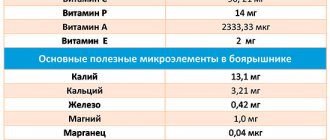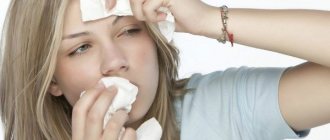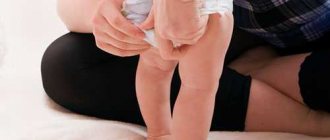Normal body temperatures in infants and the reasons for their increase to 37 and 38 degrees
The body temperature of a child under 1 year of age differs from that of an adult. This is due to the fact that the baby has not yet fully developed the processes of heat regulation in the body.
Reference! The normal body temperature of a newborn is between 36.2ºС and 37.0ºС. It depends on what the child is doing: sleeping, playing, eating, so the temperature may vary during the day.
Each mother can determine the normal temperature for her child using an observation diary . To do this, it is necessary to measure and record the temperature at a certain time for 2-3 days, but not immediately after sleep, active games or crying, and not after eating.
If it turns out that the baby's temperature is elevated, you should find out why this happened. Hyperthermia can occur due to:
- overheating (the child is dressed too warmly or has been in the sun for a long time);
- prolonged crying or active play;
- teething;
- stress;
- post-vaccination reaction;
- development of a cold or intestinal infection;
- exposure to a bacterial or viral infection, but other specific symptoms will also be present in the form of a runny nose, red throat, and cough.
Komarovsky water temperature for bathing a newborn baby
This is a special question that worries everyone, without exception. Solving it requires overcoming some psychological barriers, but common sense will help in this case too.
First of all, we should not forget that the regulation of body temperature in a child is different from that of an adult. Therefore, one must be guided not by one’s own feelings, but by the baby’s reactions [1] . In short, if your hands are cold, this does not mean that your child is cold.
It is best to measure water temperature with an alcohol thermometer, which is placed in a protective plastic case. Such a thermometer can be kept in the bath during the entire bathing time, allowing you to constantly monitor the water temperature.
The temperature of the first bath must satisfy the following requirements:
1) can be carried by a child without harm to his own health;
2) can be tolerated without nervous stress by parents and without validol by grandmothers;
3) should bring pleasure to everyone involved in the bathing process.
The easiest one on this list to solve is the first problem. A child without any particular risk (or rather, without risk at all) can be immersed in a bath with a water temperature of 26 °C to 37 °C[2]. Thus, there is nothing particularly to fear for the child. But before solving other problems, you still need to decide what water temperature is ideal for swimming?
Water should not allow the child to relax. Cold exposure to the skin sharply increases blood flow in the muscles and increases their tone. The heart works more actively, biologically active substances are released into the blood, stimulating metabolism and increasing resistance to infections.
A child in water with a temperature above 35 ° C has no incentive to move and develop. It is quite difficult to make him jump with his arms and legs. But such a bath, as a rule, does not cause any unpleasant sensations in the baby - after all, although he is a cub, he is human, and by nature he is lazy. And in the water, with his entire appearance he demonstrates bliss, causing reciprocal bliss from the crowd of relatives present.
But swimming in warm water does absolutely nothing for your health! It may be better to wash (wash away dirt) in such water, but for health reasons you cannot swim in these temperature conditions!
At the same time, when immersed in water with a temperature below 30 ° C, a child very often experiences negative emotions: it’s not that he was cold, not at all. But he doesn’t want to move his arms and legs to keep warm and begins to get indignant. And the grandmothers are indignant with him... Well, there is no need to turn the start of bathing into a test for all family members - this can very quickly develop a negative reflex in the child to just the sight of the bathroom. And a child screaming in the bath leads to increased blood pressure in grandmothers, who also need to be loved and taken care of.
The optimal temperature to start swimming is 33-34 °C.
This temperature is of little use, but pleasant. It gives you the opportunity to fall in love with the bathing procedure. Only one thing is important: do not stay at this temperature for too long.
There are many books that describe in detail how to lower the water temperature and increase the bathing time. If you really want to, search, read, take notes. But all tables and graphs, as a rule, can be reduced to a few simple rules, and we are striving for simplicity.
There are only three such rules:
1) no violence - pleasure for everyone (this is generally the most important rule);
2) the lower the water temperature, the better;
3) the longer in the water, the better, but more than 40 minutes does not make sense.
We'll talk about how to implement these rules a little later.
[1] The most famous folk way of measuring temperature without any thermometers is to dip your elbow in water. This really prevents the child from getting scalded. But the water that seems normal (warm) to you will probably not be the best for the child. Therefore, do not reject the achievements of civilization and invest in a thermometer.
[2] In fact, according to some very reputable physiologists, the water temperature can be much lower. But at the very beginning of the book I honestly admitted that I have nothing to do with extremism.
author Komarovsky E.O. book Child's health and the common sense of his relatives published 02/26/2010 14:47
Under what circumstances should you not wash your baby?
The presence of hyperthermia indicates that the child's body is fighting infection . In this state, the skin vessels are in an expanded state, the rush of blood to the skin helps to cool it. Swimming during this period can cause severe stress on the body. Under the influence of warm water, blood flow to the skin will increase, the load on the heart muscle and lungs will increase, while the internal organs will experience a lack of blood circulation.
Why can't you bathe your baby? If the temperature rise is caused by a disease, then bathing will cause discomfort and crying in the baby. Having remembered this negative point, the child may have a bad reaction to further bathing after recovery.
Attention! Parents should carefully monitor infant hygiene. If the temperature is raised to a critical level for bathing, then it is necessary to wipe the child’s body with a damp cloth.
Pediatricians note that you should not bathe a baby with an elevated body temperature if:
- sore throat;
- bronchitis;
- otitis;
- flu;
- bacterial infections;
- skin inflammations;
- and also after vaccination.
Diving for infants: benefits and harms Dr. Komarovsky
All mothers and fathers strive to raise their child healthy and strong. And one of the ways to achieve this is swimming. Infant swimming became part of newborn care only in 1939 thanks to one Australian mother named Timerman (who later took up infant swimming professionally and traveled to many countries with training programs). And in the vast expanses of the once “immense” Soviet country, learning to swim in a home bath and in a pool at a clinic was included in the care program for Soviet infants. The “Swim before walking” method was developed and implemented by Z.P. Firsova - a whole year-long program with a clear set of exercises - so many moves in one direction, so many in the other, “two stomps, three slams.” Komarovsky also describes in detail in his book when and how to start swimming and diving. I have no doubt that it is beneficial for a baby to swim and splash around in the water.
But as for diving, or again a formalized exercise called “diving,” it seems a little contradictory to me. And as a mother who wishes only goodness and peace for her baby, I will try to briefly describe the PROS and CONS I found.
So, why should a child dive?
:
1) At birth, a child has a “hiding” reflex (holding his breath), which gradually fades by 3 months. Therefore, by supporting this reflex beyond 3 months, parents can help the child learn to swim independently as early as possible and they themselves will be calm that the child will not choke on water during the first swim. This technique is known - the child is introduced to a new reflex to the “dive” command. More details can be found either from Firsov or from the same Komarovsky (in simpler language). 2) When diving, children better develop their lungs, strengthen their health, the body’s defenses, reunite with the water element, etc. For details, please refer to Aquaculture I.B. Charkovsky on his website. As I understand it, this specialist, teacher, experimenter, among other things, works with seriously ill children - he treats them through forced “diving” - there is also an article-review of a participant in his workshop - interesting. 3) Children - diving infants develop better intellectually, are more confident, and calm.
Here are the arguments why babies don’t need to dive
:
1) Severe stress in the baby due to loss of support and connection. Water, although an element close to man, is no longer quite familiar, and therefore the baby feels danger, a threat. Excerpt from an interview with the head of the department of the Mental Health Center, Dr. med. Sciences, Professor Galina Kozlovskaya, published on the website https://www.mama-papa.com.ua
I have come across cases where a baby was thrown into the water - and head down! - in the hope that he will instinctively swim out, and then get used to it and feel as comfortable in the water as in the air. He will become a kind of Ichthyander. But the stress caused the children to develop severe fears. And some even developed severe mental illness because these babies were genetically more vulnerable than others. They were at risk, but if it had not been for such early and severe stress, their health most likely would not have deteriorated. And so the poor things developed psychosis, because being in water without a bottom for a small child is extremely stressful
situation.
And for some reason, at the whim of adult innovators, he is forced to experience it in infancy. But for infancy, on the contrary, a protective
situation is needed. To maintain mental health, a small child should not experience any stress. I came across information that in the West (for example, in France), where experiments with infant swimming began much earlier than here, negative results have already been obtained. At first, small “amphibians” are ahead of ordinary children in their development, but by adolescence they begin to noticeably lag behind them.
2) Formation of negative depressed states (after all, a small child cannot use force or show aggression, he does not know how to do this yet). And here again is a quote from an article by Zh.V. Tsaregradskaya, perinatologist psychologist (source):
Let's look at the diving situation from the child's perspective. He came to new conditions of existence from a world where he was completely protected, provided with everything vital and protected from all troubles. His mother was the guarantor of such protection. The need for protection remains in the child throughout the entire period of brain development (3 years), i.e. he feels like an absolutely defenseless creature in need of care. And suddenly his mother gives him to someone else’s aunt (or better yet, she does it herself), who begins to drown him, putting him on the brink of life and death. The baby cannot understand your ideas about his development and health. He only understands that his life is in mortal danger. Moreover, this danger manifests itself regularly and has universal proportions, since the mother cannot protect him. The same applies to the hardening situation.
In what cases can babies be washed?
- Chickenpox . The disease is accompanied by the appearance of ulcers on the body. They itch and itch, and when the child sweats, the itching intensifies. Bathing in warm water will help wash away sweat from the body and make your child feel better. But taking a bath is possible if the body temperature does not exceed 38°C. At the same time, you should not rub the baby’s body with a washcloth, so as not to damage the wounds.
- Runny nose . With a slight increase in temperature and slight nasal congestion, bathing will benefit the child. With the help of steam and drops of water, the nasal cavity is cleansed and nasal mucus is removed. If there is heavy discharge against a background of elevated temperature, then it is better to avoid swimming.
- Overheating . If the cause of hyperthermia is hot and dry air in the apartment or on the street, as well as too warm clothes, swimming is not only possible, but also necessary. But first you need to eliminate the factor that provokes the temperature and wait until the baby’s body cools down a little.
- Teething . If during this period the temperature is elevated, but the child feels well, he is active and cheerful, then bathing will benefit him. Taking a bath will distract the child from the discomfort caused by itchy gums, and his mood will significantly improve.
- Cough . In this case, the issue of bathing is controversial. If cough treatment is carried out correctly, high humidity and optimal temperature are maintained in the room, then bathing will promote better mucus discharge. If the room is stuffy and hot, the air is dry and the child does not receive enough fluids, then it is better to cancel bathing.
Important! If a break was taken from bathing a child due to illness, then water procedures can be resumed only after the baby’s temperature returns to normal and he becomes cheerful and active. It is also worth consulting with your pediatrician on this issue.
Doctor Komarovsky's opinion
In pediatrics, an elevated temperature in an infant is considered to be above 37.8°C . Therefore, the issue of bathing an active child with a good appetite and a temperature of 37°C is not even discussed - bathing is allowed. If the baby is lethargic, eats poorly and is capricious, then you should forget about a full bath until the normal state is restored. If an elevated temperature persists for several days, this may be a sign of an infection developing.
A temperature of 38°C is considered quite high. If it is accompanied by weakness and symptoms of the disease, then bathing should be limited to wiping with wet wipes. Moreover, wiping should be carried out gradually: one hand is wiped and immediately covered with a towel or clothing, then the second hand is wiped and also immediately covered, and so on.
Bathing a child at a high temperature can cause hypothermia , which will worsen his condition.
Tips for parents
If parents decide to bathe a child during an illness, then it is necessary to follow the rules so as not to harm the baby:
- The water temperature in the bathroom should correspond to the level of 36.6°C - 37°C. This temperature regime will help reduce the fever and alleviate the condition of the baby.
- Bathing should be limited to a quick rinse with warm water.
- After bathing, the baby's body is blotted with a terry towel. The second option is to immediately wrap the child in a sheet or dress him in warm and dry clothes.
- During bathing, it is necessary to exclude drafts to avoid hypothermia of the child.
If bathing in the bathroom has been temporarily stopped, then when resuming it, parents must adhere to the above rules so that the child does not get sick again. There is no consensus on bathing a baby when the temperature rises. Each case must be considered individually and take into account the recommendations given by the pediatrician.
Diving using the Komarovsky method (Be careful)!!!!
I READ THIS ARTICLE BY ONE GIRL AND COULD NOT COPY IT INTO THE DIARY. MAYBE SOMEONE WILL REMEMBER!!!!
I don’t like all of Komarovsky’s advice, but I like it and watch many of his programs when I have time. Although I accept the usual ways of raising and caring for babies (albeit in the old fashioned way). This book the girl is talking about has not read. Therefore, I copied and will not even leave my opinion on this matter, just my recommendation:
Everything needs to be done only with an instructor, although I don’t even want to do it with an instructor. Everything has its time.
Hello dear mothers and milk fairies! Thank you very much to Vombat for your answer regarding establishing feeding! I gladly took your advice. I want to share a not very happy story that happened to us and warn those who decided to take up swimming with their child. During pregnancy, a friend advised me to buy a “very good” book by doctor Komarovsky, “The Health of the Child and the Common Sense of His Relatives.” I really really liked the book, especially the tips on how to raise a healthy child. And having given birth to my baby, I decided that we would raise her according to Komarovsky, he writes very convincingly about health, and ridicules the old traditional methods of bathing, temperature conditions, etc., but what mother does not want her child to be healthy?! The fact is that the author of this book recommends bathing the child in a large bath, at a temperature the lower the better, and at the same time it is very useful to dive in, and then cough and do other things, while clearing the lungs of dust. And bathing in a small bath is not bathing, but bullying a child! There are a lot of benefits and incredible health benefits! As for diving, Komarovsky writes that children under 2 months have an innate reflex to hold their breath and there is absolutely nothing to be afraid of; on the contrary, it is necessary to do this to avoid allergies and other ailments. In general, after reading this and listening to my friend’s stories about how they successfully do all this with their baby, we decided to try it. And for some reason, my husband and I had no shadow of a doubt that the reflex might not work. At the age of 24 days, we bathed the baby in a large bathtub, everything went great, she swam on her tummy, then we dipped her head in and immediately back... When they pulled her out, she didn’t scream as we expected and didn’t start coughing, but began to gasp for air with her mouth silently, her eyes were frightened, turned a little blue. In general, we were terrified, we began to pump her out, turned her upside down, artificial respiration. In a panic, I don’t remember what they did. After a few minutes or seconds (it seemed to me that an eternity had passed), she came to her senses, screamed, coughed, but still was not as usual, but rather lethargic and frightened. We called an ambulance. They took us to the hospital, did an x-ray and read a lot of words: “how could it be possible to experiment on a child like that?” In general, as the doctors say, we escaped with a slight fright; during diving a reflex laryngospasm occurred, fortunately no water entered the lungs, but it could have ended very badly and such cases are not uncommon. Now, remembering all this, tears well up in my eyes, and a huge feeling of guilt in front of my baby, because we love her very much, thank God everything worked out! I hope our unfortunate diving incident will warn someone against such attempts, if of course there are such crazy people. Doctors recommend doing this only with an instructor, and even then, it is very dangerous. There is a time for everything, and it is better to learn to dive at a conscious age.











